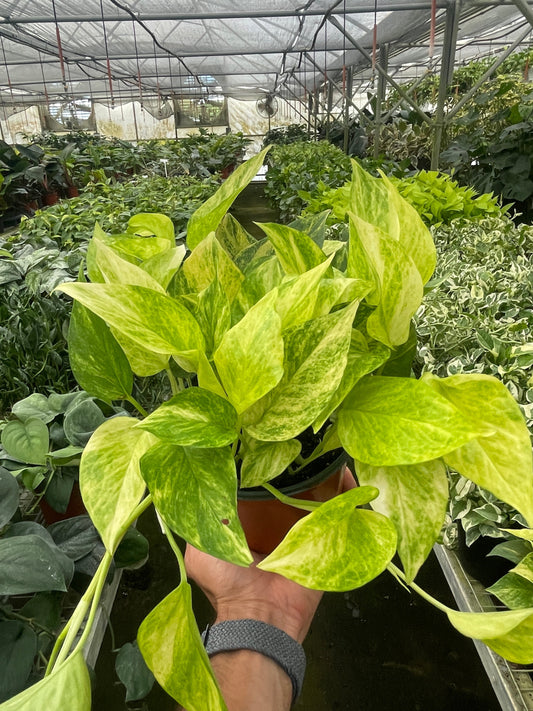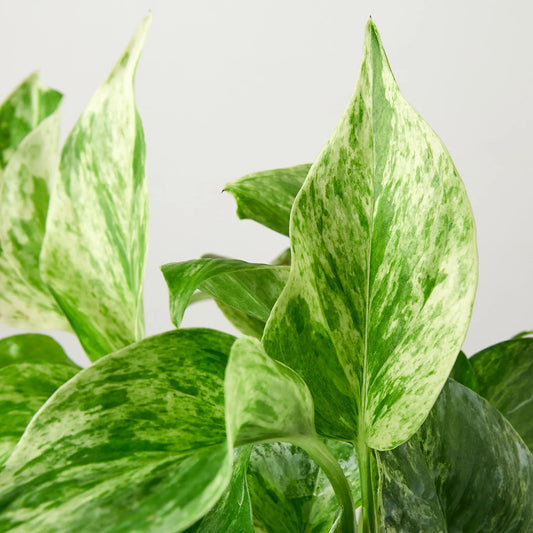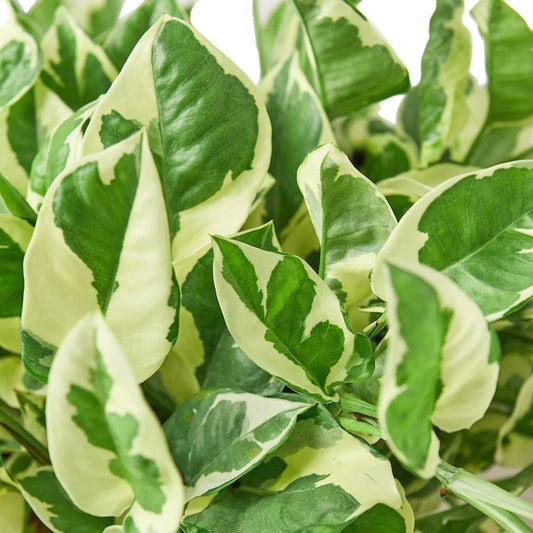How to Grow and Care for Spiderworts
Cafe Planta Team
If you're looking for a houseplant that's both easy to care for and visually striking, spiderworts might just be your new favorite. With their vibrant leaves and charming flowers, these plants can add a splash of color and life to any room. But before you rush to the nearest nursery, let's talk about how to make these beauties thrive in your home.
In this article, we'll explore everything you need to know about growing and caring for spiderworts. From selecting the right variety to understanding their light and watering needs, we've got you covered. By the end, you'll be equipped with all the knowledge to help your spiderworts flourish.
Getting to Know Spiderworts
Spiderworts, scientifically known as Tradescantia, are a group of plants native to the Americas. These plants are known for their long, arching leaves and small, three-petaled flowers that come in shades of purple, pink, or white. The foliage can be just as colorful, often featuring stripes or variegation in green, purple, silver, or even pink hues.
One of the things that make spiderworts appealing to plant lovers is their versatility. They can be grown indoors as houseplants or outdoors as part of a garden or landscape. They're also quite resilient, making them great for both beginners and seasoned plant parents alike.
In terms of growth habits, spiderworts can be trailing or upright. Trailing varieties are perfect for hanging baskets or as ground covers, while upright varieties can add height and texture to a plant arrangement. Whether you choose a trailing or upright type, you'll find that spiderworts are an excellent choice for adding a touch of nature to your living space.
Choosing the Right Variety
With so many spiderwort varieties available, it can be challenging to pick just one. However, your choice will often depend on your personal preferences and the conditions in your home. Here are a few popular varieties to consider:
- Tradescantia zebrina: Known for its striking purple and silver-striped leaves, this trailing variety is perfect for hanging planters.
- Tradescantia pallida: Commonly called purple heart, this variety features deep purple leaves and pink flowers. Its vibrant color makes it a standout in any collection.
- Tradescantia fluminensis: With green and white variegated leaves, this variety is ideal for adding a soft touch of color.
- Tradescantia spathacea: Also known as Moses-in-the-cradle, this plant has sword-shaped leaves with a purple underside, adding a unique texture to your plant arrangement.
Consider the light and space available in your home when selecting a variety. Some spiderworts, like Tradescantia zebrina, love bright light, while others, such as Tradescantia fluminensis, can tolerate shadier spots. Matching the plant's needs with your environment will ensure a happy and healthy spiderwort.
Potting and Soil Requirements
Spiderworts aren't too picky about their potting situation, but there are a few things to keep in mind to ensure they thrive. First, choose a pot with good drainage. While these plants are fairly hardy, they don't like sitting in waterlogged soil. A pot with drainage holes will help prevent root rot and other issues associated with overwatering.
As for soil, spiderworts appreciate a well-draining mix. You can use a standard houseplant potting mix, but it's often helpful to add some perlite or sand to improve drainage. Here's a simple recipe you can try:
- 2 parts all-purpose potting soil
- 1 part perlite or sand
- 1 part peat moss or coconut coir
This mix provides the right balance of nutrients and drainage, helping your spiderworts grow strong and healthy. Remember to repot your plants every couple of years or when you notice the roots growing out of the bottom of the pot.
Light and Temperature Considerations
Spiderworts are quite adaptable when it comes to light, but providing the right amount is key to keeping them vibrant. Most varieties thrive in bright, indirect light. A spot near a window with filtered sunlight is often ideal. However, they can also tolerate lower light conditions, though their growth may slow, and the colors might not be as vivid.
If you're growing your spiderworts outdoors, they can handle partial shade to full sun, depending on the variety. Just be cautious of intense afternoon sunlight, which can scorch the leaves. A little bit of experimenting with light levels can help you find the sweet spot for your plant.
As for temperature, spiderworts prefer a range of 60-75°F (15-24°C). They can tolerate slightly cooler temperatures, but it's best to avoid exposing them to frost or extreme cold. If you live in a climate with chilly winters, consider bringing your outdoor spiderworts inside or providing some protection from the cold.
Watering Your Spiderworts
Watering is an area where spiderworts show their forgiving nature. They prefer their soil to be kept evenly moist but not soggy. A good rule of thumb is to water them when the top inch of soil feels dry. During the growing season, which typically runs from spring to early fall, you might find yourself watering once a week or more, depending on the humidity and temperature in your home.
In the winter months, spiderworts enter a period of dormancy, and their water needs decrease. During this time, you can cut back on watering, allowing the soil to dry out a bit more between waterings. Just be sure not to let it dry out completely, as this can stress the plant.
When watering, aim to water the soil directly rather than the leaves. This helps prevent fungal issues and keeps the foliage looking its best. As always, ensure that any excess water can drain freely from the pot to avoid root rot.
Feeding and Fertilizing
Spiderworts aren't heavy feeders, but a little boost now and then can encourage healthy growth. During the growing season, you can feed them once a month with a balanced, water-soluble fertilizer. A 10-10-10 or 20-20-20 formula should work well. Simply dilute the fertilizer to half the recommended strength and apply it to the soil when watering.
In the winter, you can skip the fertilizer, as the plant is not actively growing and doesn't require extra nutrients. Over-fertilizing during this time can cause a buildup of salts in the soil, which can harm your plant.
As with any plant, it's essential to monitor your spiderworts for signs of nutrient deficiencies or excesses. Yellowing leaves or slowed growth can indicate a lack of nutrients, while burned leaf tips might suggest over-fertilization. Adjust your feeding schedule accordingly to keep your plants happy.
Pruning and Maintenance
Spiderworts are relatively low-maintenance, but periodic pruning can help keep them looking their best. Regular trimming encourages bushier growth and prevents the plant from becoming too leggy. You can use clean, sharp scissors or pruning shears to snip back any long or unruly stems.
If your spiderwort has grown a bit wild or scraggly, don't be afraid to cut it back significantly. These plants are quite resilient and will bounce back with new growth. Just be sure to leave some foliage behind so the plant can continue to photosynthesize.
In addition to pruning, it's a good idea to remove any dead or yellowing leaves to keep your plant looking tidy and to prevent the spread of disease. If you notice any leaves with spots or signs of pests, remove them promptly to protect the rest of the plant.
Dealing with Pests and Problems
While spiderworts are generally hardy, they can occasionally fall prey to pests or diseases. Common pests include spider mites, aphids, and mealybugs. If you notice any of these critters, you can usually manage them with a gentle spray of water to dislodge them or by wiping the leaves with a damp cloth.
For more severe infestations, consider using insecticidal soap or neem oil. These treatments are effective against a variety of pests and are generally safe for your plants when used as directed. Just be sure to follow the product instructions carefully and test it on a small section of the plant first to ensure there's no adverse reaction.
As for diseases, spiderworts can sometimes suffer from root rot if they're overwatered or if the soil doesn't drain well. To prevent this, always ensure that your pot has drainage holes and that you're not letting the plant sit in waterlogged soil. If you suspect root rot, you may need to repot the plant in fresh soil and trim away any affected roots.
Creating a Spiderwort-Friendly Space
Once you've mastered the basics of spiderwort care, it's time to think about how to incorporate them into your home decor. Thanks to their versatility, these plants can fit into just about any interior design style.
For a modern look, consider placing a Tradescantia zebrina in a sleek, monochrome pot alongside other minimalist accessories. The vibrant stripes will pop against a neutral background, adding a touch of color without overwhelming the space.
If you prefer a bohemian vibe, try hanging a few spiderworts in macrame plant hangers, letting their trailing vines cascade down. You can mix and match different varieties for an eclectic look, incorporating other trailing plants like pothos or string of hearts.
Spiderworts also make excellent additions to indoor gardens or terrariums. Their unique foliage can add texture and variety to a collection of succulents or ferns. Just be sure to choose plants with similar light and water requirements to ensure everyone gets along harmoniously.
Final Thoughts
Growing and caring for spiderworts can be a rewarding experience for plant people of all skill levels. These resilient plants offer vibrant colors and easy-going nature, making them a fantastic addition to any home. By following the tips in this article, you'll be well on your way to creating a thriving spiderwort collection.
At Cafe Planta, we're passionate about helping you nurture your green space. Whether you're looking for unique houseplants or stylish plant care accessories, we've got you covered. If you have any questions or just want to chat about plants, feel free to email us or reach out on Instagram. Let's grow together!



















